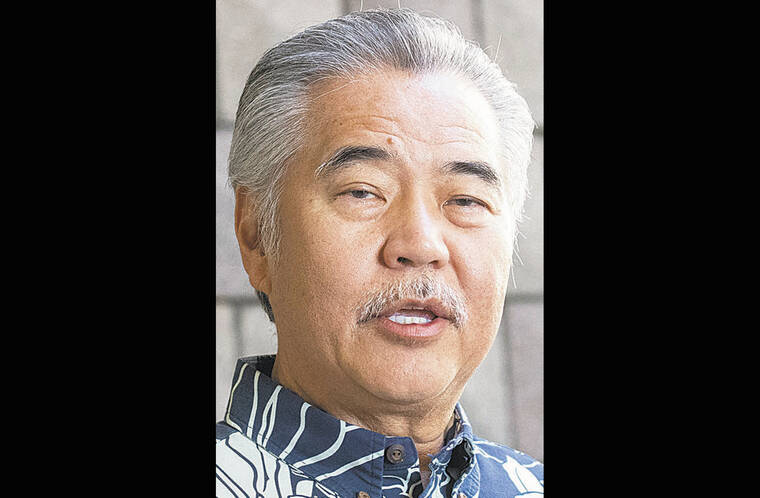Gov. David Ige on Monday signed into law House Bill 2511, which allocates $600 million in funding to the Department of Hawaiian Home Lands.
“This is a historic day for the homesteading program,” Ige said during a bill-signing ceremony at Washington Place, the governor’s mansion in Honolulu. “… The appropriation of $600 million in House Bill 2511 is a huge step forward, but clearly not fulfilling all the requirements” of the 1921 Hawaiian Homes Commission Act.
“We have moved forward in several critical ways to provide beneficiaries with more options of how they can benefit from the program,” Ige said. “We’ve initiated (a) new subsistence lease program, so that those who are interested in farming but are not interested in commercial whole-scale farming will be able to participate in that program.”
The bill became law as Act 279 upon Ige’s signature.
About 28,700 Native Hawaiians, including about 10,650 on Hawaii Island, are on a waiting list for DHHL lands statewide. Many have been on that list for decades.
Earlier drafts of the measure included $487.6 million “for the preparation, planning and development” of 2,910 new lots on Hawaiian homelands statewide. It also had a list of projects to be funded. The list was removed from the measure during conference committee.
Also removed from the final version of the bill was a $112 million allocation that would allow beneficiaries on the list to opt for $100,000 for a down-payment or mortgage assistance. Those who accept the payment would be taken off the wait list.
While the bill in all its forms received virtually unanimous praise from lawmakers, not everyone was happy about the $100,000 payments to whittle down the wait list.
“To get off the list? You’re trying to put people on the land,” Keaukaha Community Association President Patrick Kahawaiolaa said in late April. “Why are we telling Native Hawaiians, ‘Hey, here’s X amount of dollars to get off the list?”
Kahawaiolaa said at the time he is “truly concerned about who’s going to manage” the funds, calling DHHL “an entity that has an atrocious record of putting people on the land.”
Language in the final legislation that emerged from a House-Senate conference committee was more vague regarding what the bill will fund, but hinted at the same or similar priorities mentioned in earlier versions of the measure.
The version that became law mentioned only the $600 million to: develop lots or units; purchase available land for units; provide funding for a wait-lister or qualified relative who doesn’t own a principal residence in Hawaii to purchase one; and provide a mortgage or rental subsidy to the applicant on the wait list for the principal residence.
“We did hear from beneficiary communities about the interest in rentals on Hawaiian homelands. And the department’s first high-rise rental project is underway in Moiliili (Oahu),” Ige said.
Rep. Mark Nakashima, a Hamakua Democrat and House Judiciary and Hawaiian Affairs chairman, said during the ceremony he “never dreamed that this day would be here … where we would provide so much resources for the Native Hawaiian community.”
DHHL Chairman William Aila Jr. said the funds appropriated by the new law “offer us an aggressive way forward.”
“This day and this signing brings us one step forward to Prince Kuhio’s vision, and on the 100th anniversary of the Hawaiian Homes Commission Act. It is the most consequential allocation of funding that the department has received in its history of existence,” Aila said.
“What this will do is expedite construction that would’ve been stretched out 10, 15 years from now … into three, four, five years. … And given the resources, we will ensure that it gets done.”
Email John Burnett at jburnett@hawaiitribune-herald.com.


